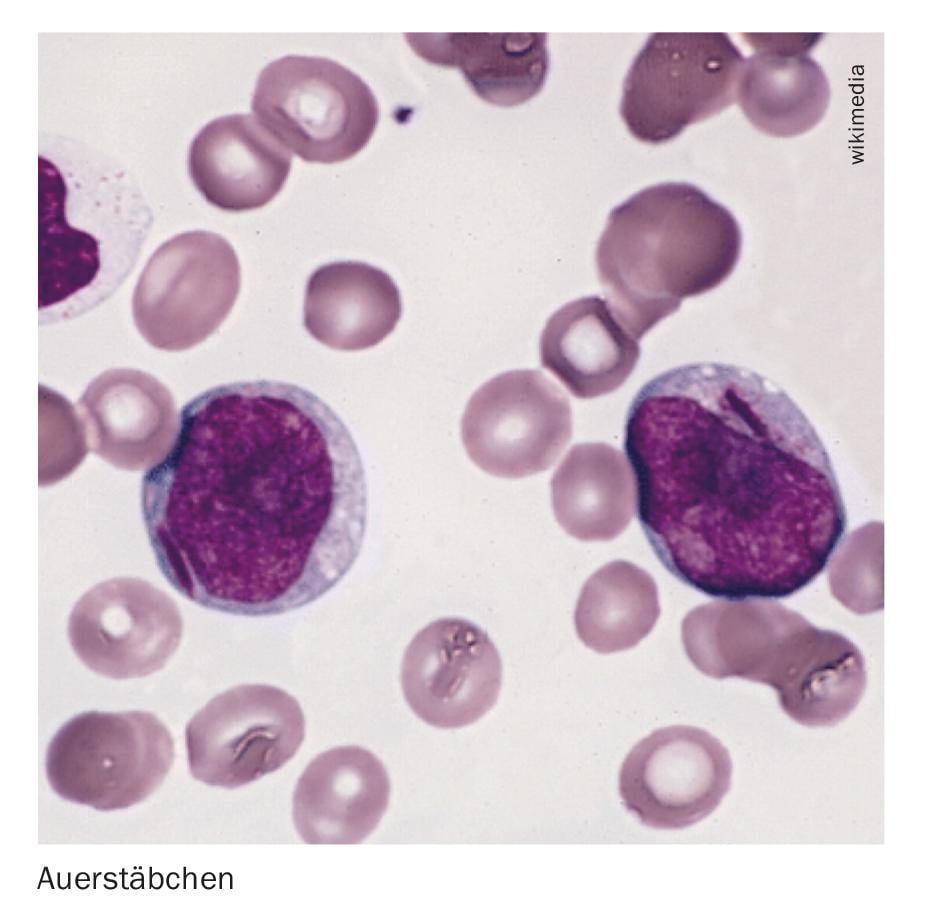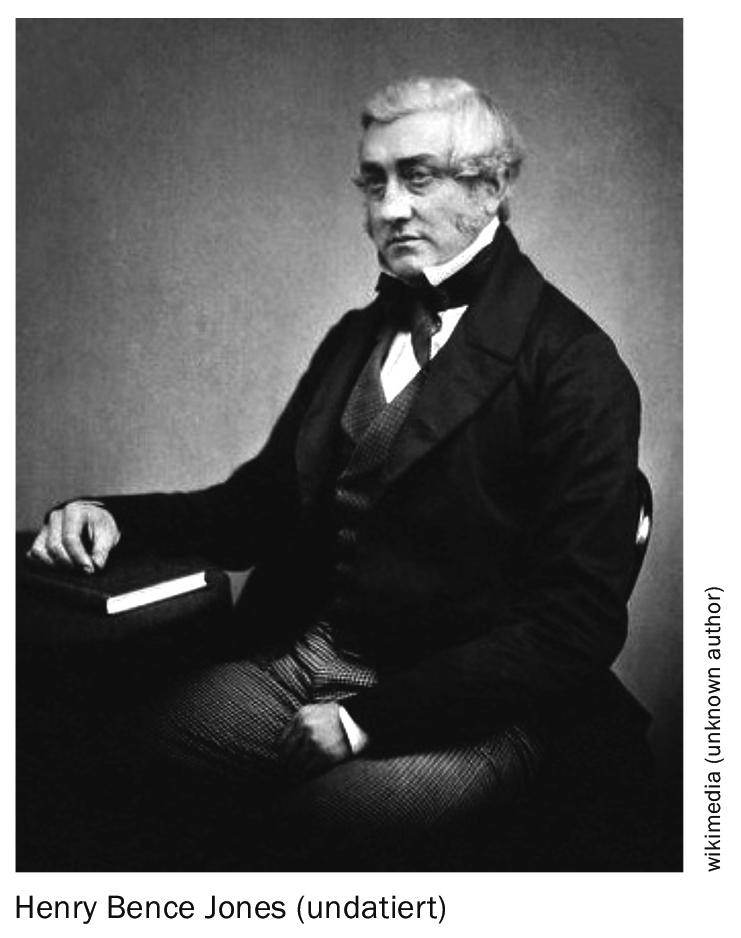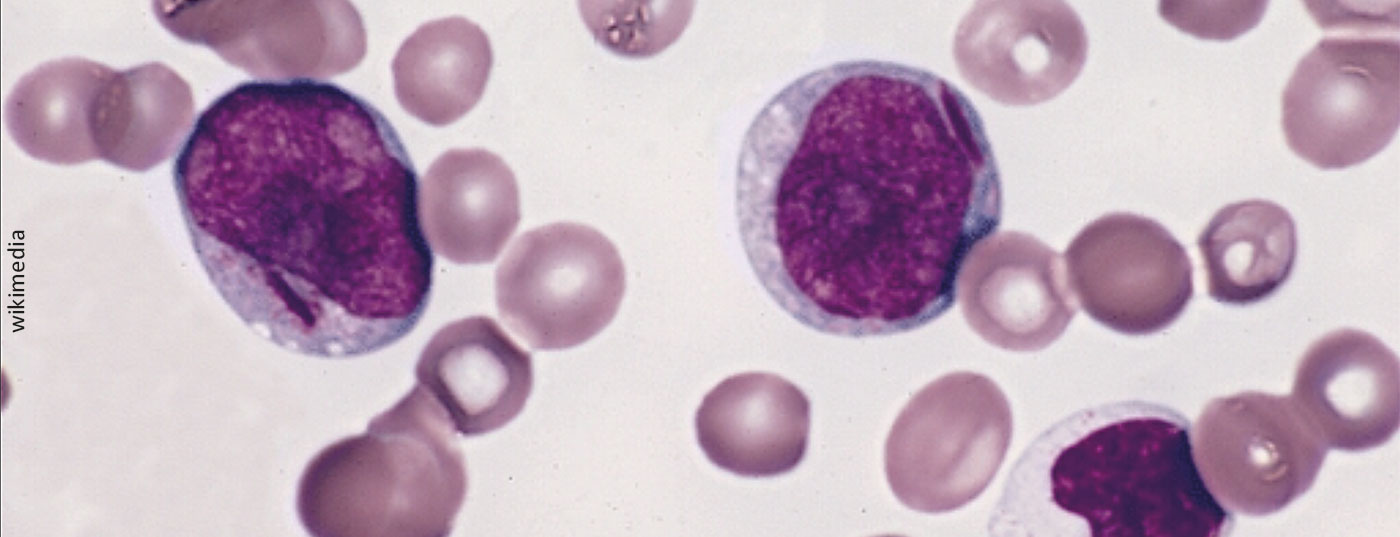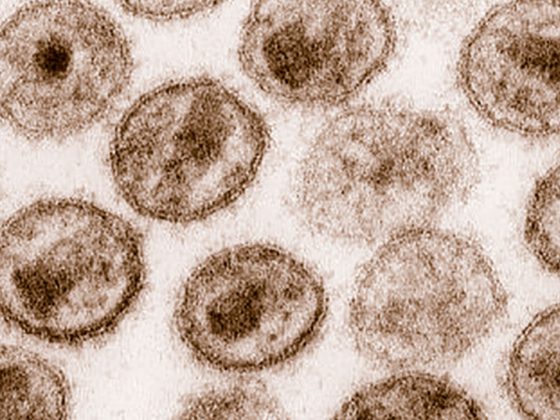Since medical school, proper names have shaped the daily linguistic repertoire of most physicians. And yet their origin often remains in the dark. Therefore, here is a search for two common hematology terms – for the next coffee break or clinic quiz.
Auerstäbchen and Bence-Jones proteinuria – what these are probably clear to most. But where do the names of these hematologic phenomena actually come from?
Caper Sticks: An American Discovery
The small azurophilic rods that occur in myeloblasts and promyelocytes in the context of leukemias were, unsurprisingly, named after their first describer: John Auer [1]. In 1906, the US physician and physiologist published his work “Some hitherto undescribed structures found in the large lymphocytes of a case of acute leukaemia” with the first mention of those irregular cell organelles that later became known as “Auerstäbchen” [2,3]. Auer was born in Rochester, New York, in 1875, the son of a German beer brewer. Over the course of his stellar career, which began at Johns Hopkins University Medical School , he published nearly 150 papers. In addition to describing Auerstäbchen, he primarily studied anaphylaxis and played an important role in the development of anesthesia in thoracic surgery. After only two years of clinical work, he switched to research in physiology and pharmacology at the Rockefeller Institute for Medical Research . He soon taught physiology at Harvard Medical School and conducted research on war-related topics at the Rockefeller Institute during World War 1. In 1921, a professorship in pharmacology followed at St. Louis University School of Medicine, which Auer pursued concurrently with a clinical pharmacology career-until his death from a heart attack at age 73. But it wasn’t just the work that had taken his fancy. So he was a big fan of Henri Matisse, he loved painting and gardening. In 1903 he married the daughter of his boss, who was also a researcher at her father’s institute. Together they had three children [1]. Incidentally, cells with multiple, bundle-shaped auer rods are called Faggot cells. But that’s for another time.

Bence Jones proteins: a prevented priest at work
Somewhat earlier than John Auer described the Auer rods, Henry Bence Jones discovered the Bence Jones protein in 1848 – nothing more than free immunoglobulin light chains, which are excreted in the urine when overproduced and are deposited as amyloid in various organs [1]. In most cases, the underlying disease is multiple myeloma. However, in Bence Jones’ time there was no talk of the detection methods commonly used today, and the true character of the protein was not revealed until the 20th century. Together with two colleagues, Bence Jones treated the patient Thomas McBean, whose disease led to the first description of the Bence Jones protein [1]. The decisive factor was Bence Jones’ affinity for chemistry, which accompanied him throughout his life. He also insisted on urinalysis in each case, which he used to more accurately characterize diabetes mellitus and gout, among other conditions. And this although the Englishman, who was born in Suffolk in 1813, actually wanted to become a priest – a pious wish that remained denied him despite many efforts. In his twenties, about to emigrate to New Zealand, a relative was finally able to motivate him to study medicine – with lasting effects on the terminology of hematological diseases [1].

While still a student at St. George’s Hospital in London, he also began a chemical education as a private pupil of Thomas Graham, which he continued in Giessen under the world’s leading chemist Justus von Liebig. This set him significantly apart from his colleagues and led to Bence Jones being ahead of his time with some of his findings. After his return to London, he was primarily clinically active there and married his cousin – a marriage that produced seven children, despite her reported initial reluctance to marry. During his career, Bence Jones became a member of the prestigious College of Chemistry as well as the Royal College of Physicians , among others, and published medical discoveries for the general public in his capacity as secretary of the royal institution. He spent a lot of time in famous thermal spas at home and abroad – either for scientific interest or for personal pleasure. Bence Jones died at the age of 60 after a long history of heart problems, which culminated in a heart attack in 1873 [1].
Literature:
- www.whonamedit.com (last accessed 12/14/2021).
- Auer J: SOME HITHERTO UNDESCRIBED STRUCTURES FOUND IN THE LARGE LYMPHOCYTES OF A CASE OF ACUTE LEUKAEMIA. Am J Med Sci. 1906; 131: 1002-1015.
- Tree H: Auer rods. In: Gressner AM, Arndt T: Lexikon der Medizinischen Laboratoriumsdiagnostik. Springer Berlin Heidelberg; 2019. 231.
InFo ONCOLOGY & HEMATOLOGY 2022; 10(1): 36.











